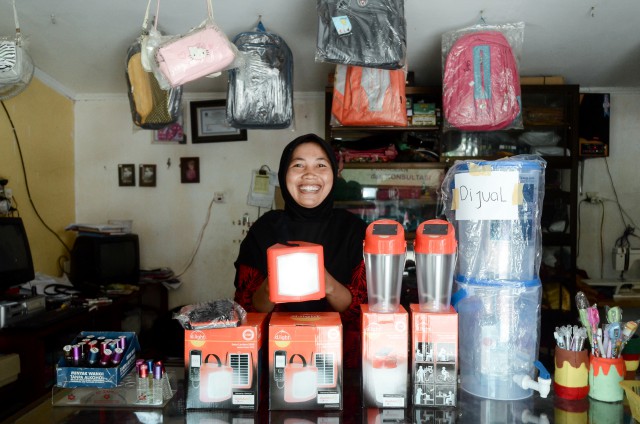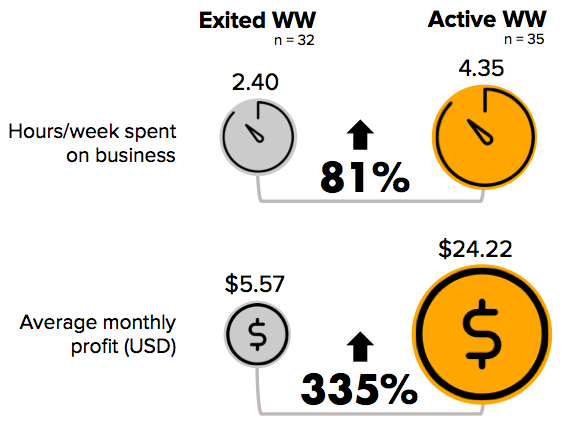
Similar to other entrepreneurs, not all “Wonder Women”-- Kopernik clean energy technology micro-entrepreneurs-- remain in business after their first year of operation. Once their immediate markets-- family, neighbors, social circles-- reach a saturation point, we notice that one of two things happens: some women are ready to expand their business into new markets, while others show diminished interest and often stop participating in the program.
Looking at our data, there is evidence that the more time the women invested in their business, the higher their sales, and the higher the likelihood they would stay in the program. Comparing performance data of those who remain active1 and those who eventually exited the program, we see that while the former invested only about twice the amount of time, they earned on average almost five times the income. Investing an additional two hours a week is crucial for Wonder Women to transcend the point at which the program provides meaningful returns.

Interviews2 with Wonder Women who left the program revealed that “lack of time to run the business” was the most common reason they left the program. Most Wonder Women had another main occupation at the time they were recruited3, and therefore were not running their technology business full-time. Not only is free time to run a side business a prerequisite to success, the returns need to equate or be greater than the amount of time invested, otherwise the side business will be the first one given up on, among other occupations and responsibilities in the family and the community.
We have yet to establish if there exists a causal relationship between the time availability and profitability of Wonder Women. That is, whether more time invested leads to higher profit, or higher profit (influenced by various factors, some of which we have previously discussed such as mobility, background, and spouse involvement) motivates the women to invest more time in their technology business, or both. These findings, however, underline the importance of recruiting women who are able to leverage greater social networks to boost their business, and also have enough time to invest in the business for it to truly pay off.
Do you see a similar pattern among microentrepreneurs in your program? We would like to hear about it.
1 We define “active” as making at least one sale in the past three months. Active Wonder Women continue to receive mentoring. After three months of inactivity, a Wonder Woman is considered “inactive”, and Kopernik staff and the Wonder Woman meet to discuss whether participation in the program is still feasible and desired.
2 We interviewed 41 women who left the program after participating for 26.7 months on average.
3 94% of 232 surveyed Wonder Women had a primary occupation at the time of recruitment. These occupations include significant time commitments but are not necessarily paying occupations (e.g. subsistence farmers).


